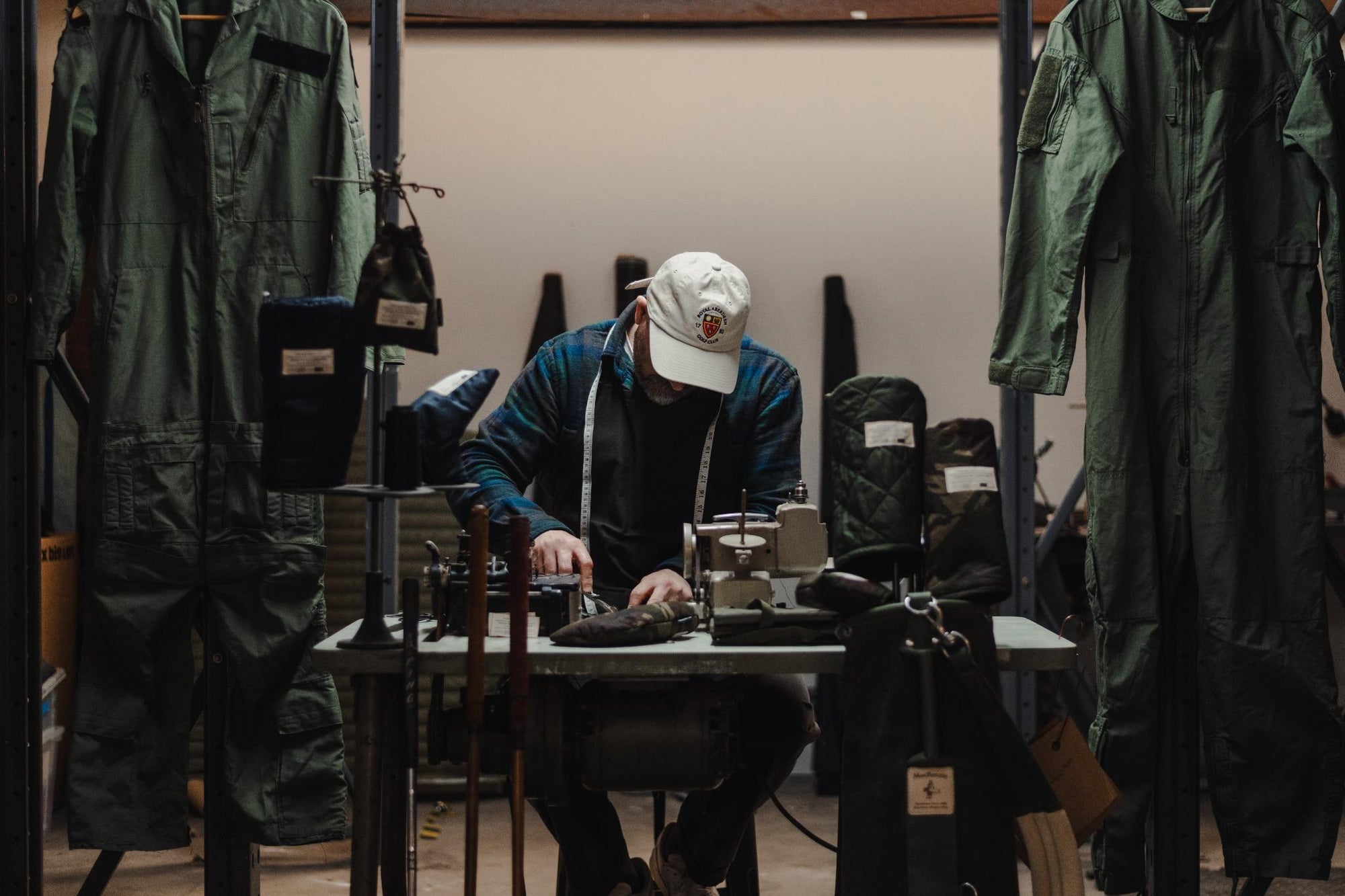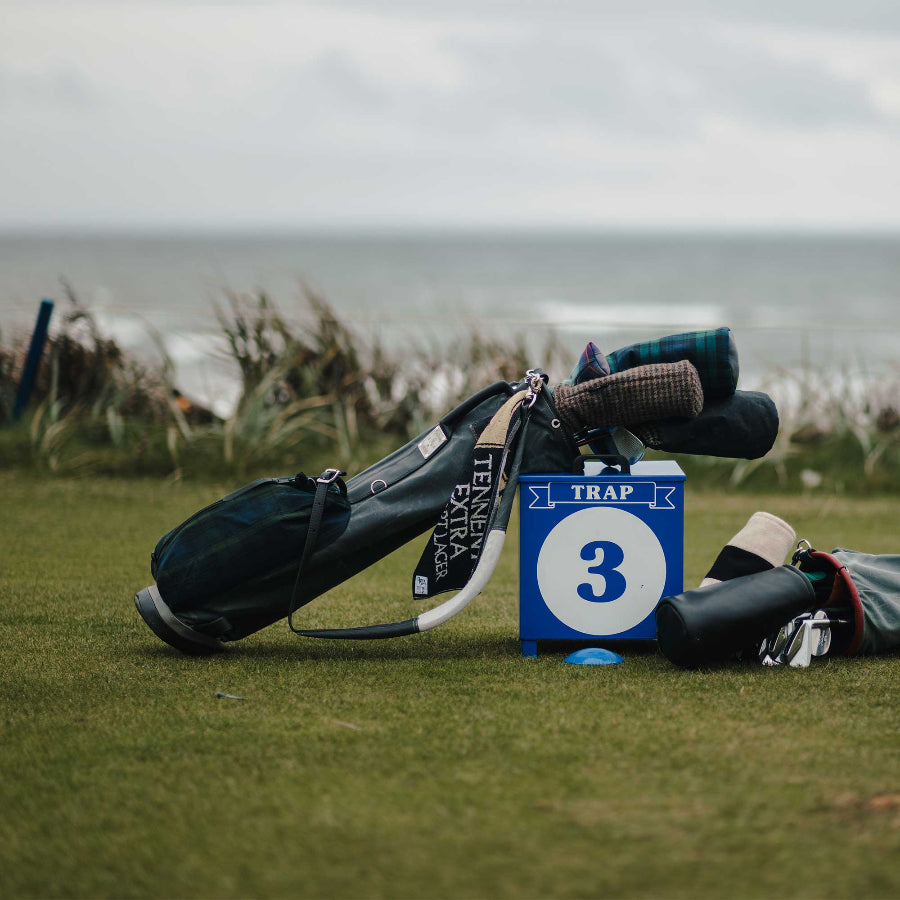woven to the game
Fairways and Flight Paths
The Journal
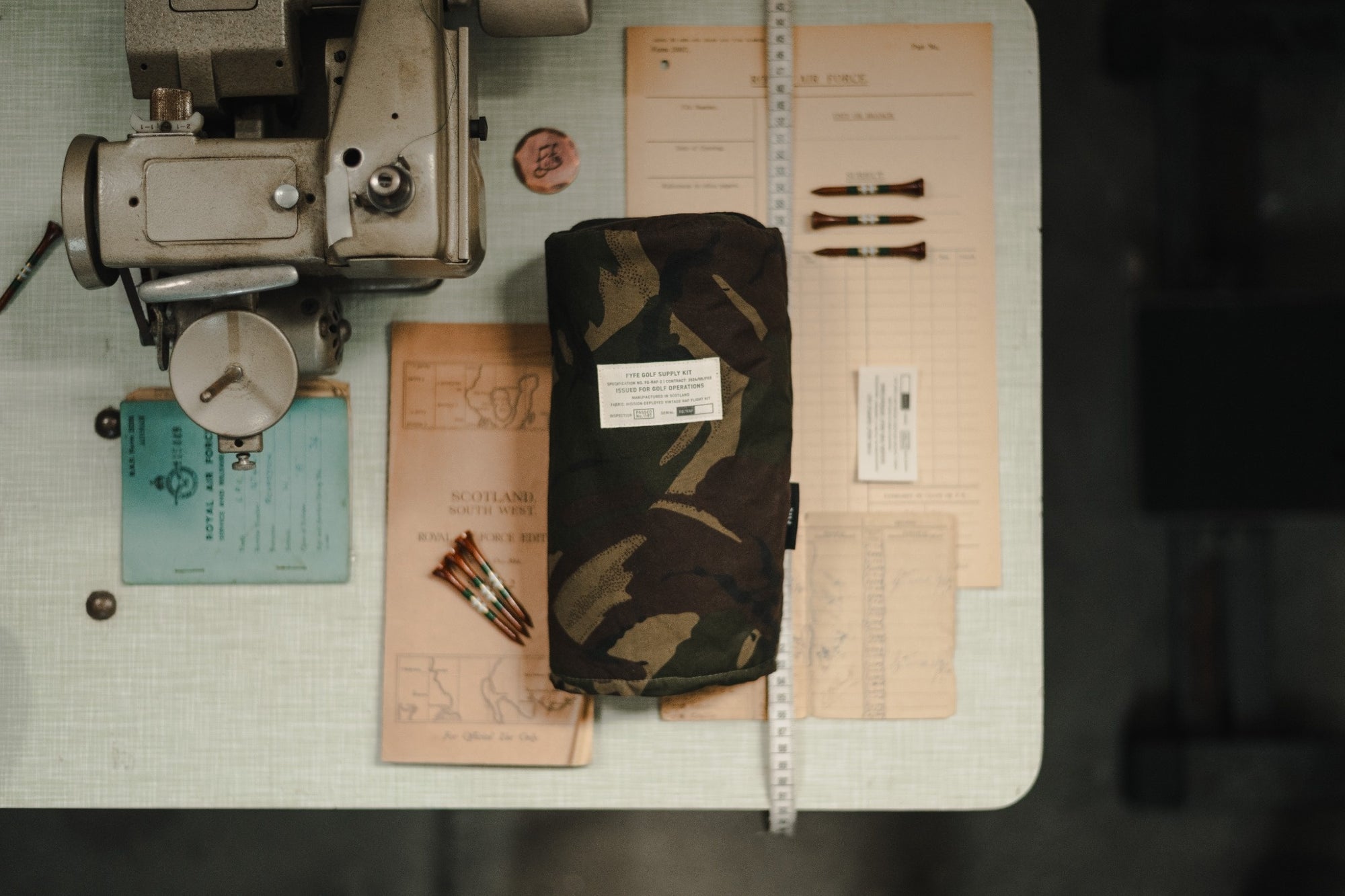
The Overlap of Scotland’s Golf Courses and RAF Airfields
At first glance, there’s little to link a well-raked bunker with a windswept runway. But across the Scottish landscape, subtle intersections reveal a shared story—of fairways that run parallel to flight paths, of land used for sport and service alike.
During the Second World War, the rolling links of Scotland took on more than golfers. With flat ground, coastal winds, and open horizons, golf courses—and the farmland they bordered—offered ideal terrain for airfields. The Royal Air Force, in rapid need of bases for training and operations, looked to the coast. What they found were courses.
In some cases, entire runways were carved into golf clubs or built on adjoining land. Others saw fairways narrowed or repurposed as taxiways. From Montrose, where the RAF established its first operational military airfield in 1913, to Crail’s Balcomie Links, still flanked by a functioning strip, the connection between aviation and the game runs deeper than many realise.
It wasn’t just the east coast. On the west coast, Prestwick played a pivotal role. By 1940, it had become a hub for transatlantic aircraft ferrying—part of the Atlantic Bridge that connected Allied manufacturing in North America to the war effort in Europe. Airmen landing at Prestwick often glimpsed the nearby course, its bunkers tracing the shoreline, as their own feet touched Scottish turf for the first time. The same winds that shaped Prestwick’s legendary bunkers guided aircraft into land.
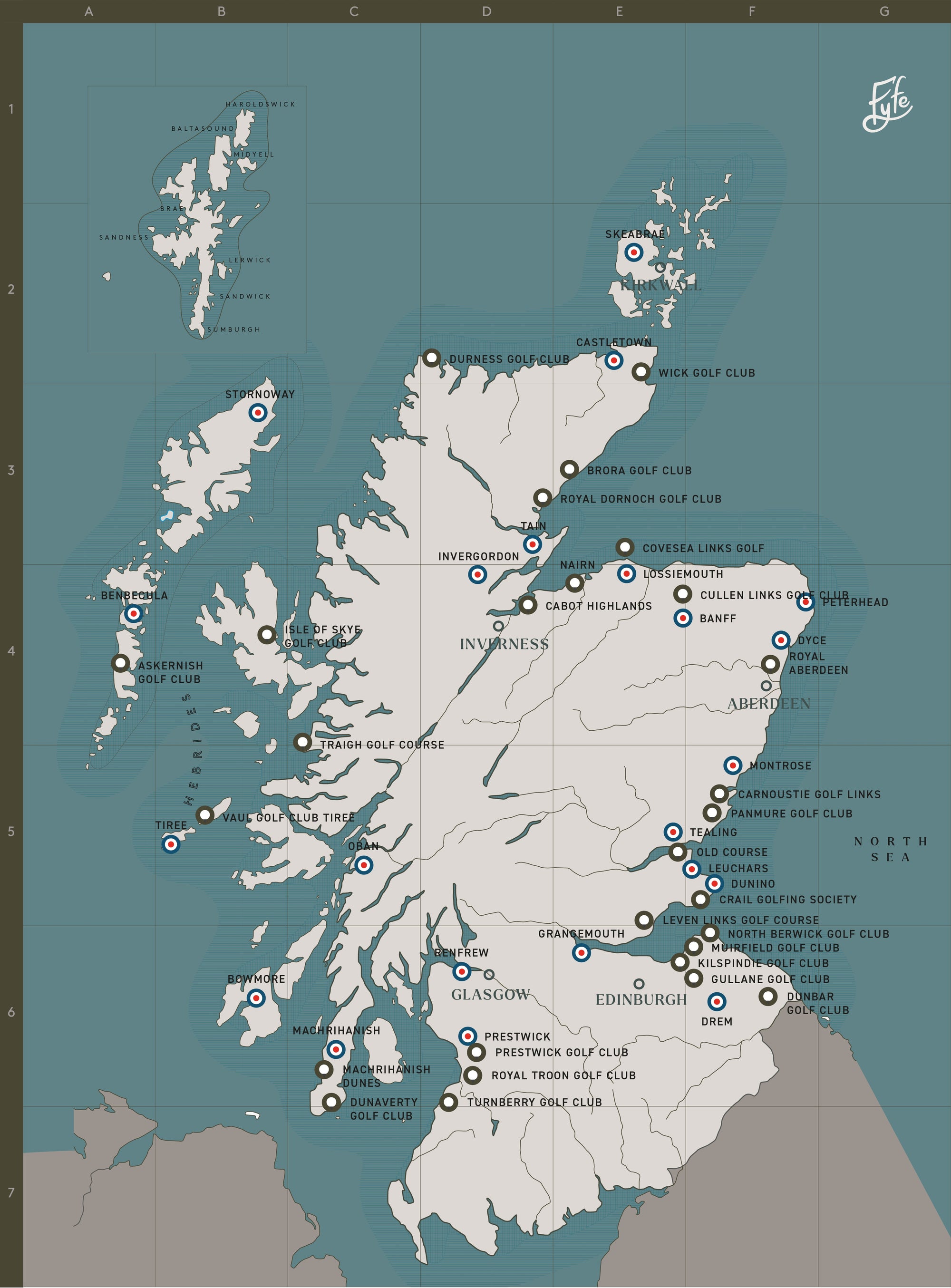
Scotland also holds a quietly powerful role in the story of the First Battle of Britain—the name given to the first enemy attack on British territory during the war. On 16 October 1939, a formation of German bombers targeted Royal Navy ships anchored in the Firth of Forth. RAF Spitfires scrambled from RAF Turnhouse(now Edinburgh Airport) and RAF Dremin East Lothian.
The resulting engagement marked the first time British fighter planes intercepted enemy aircraft over the UK—and scored victories.
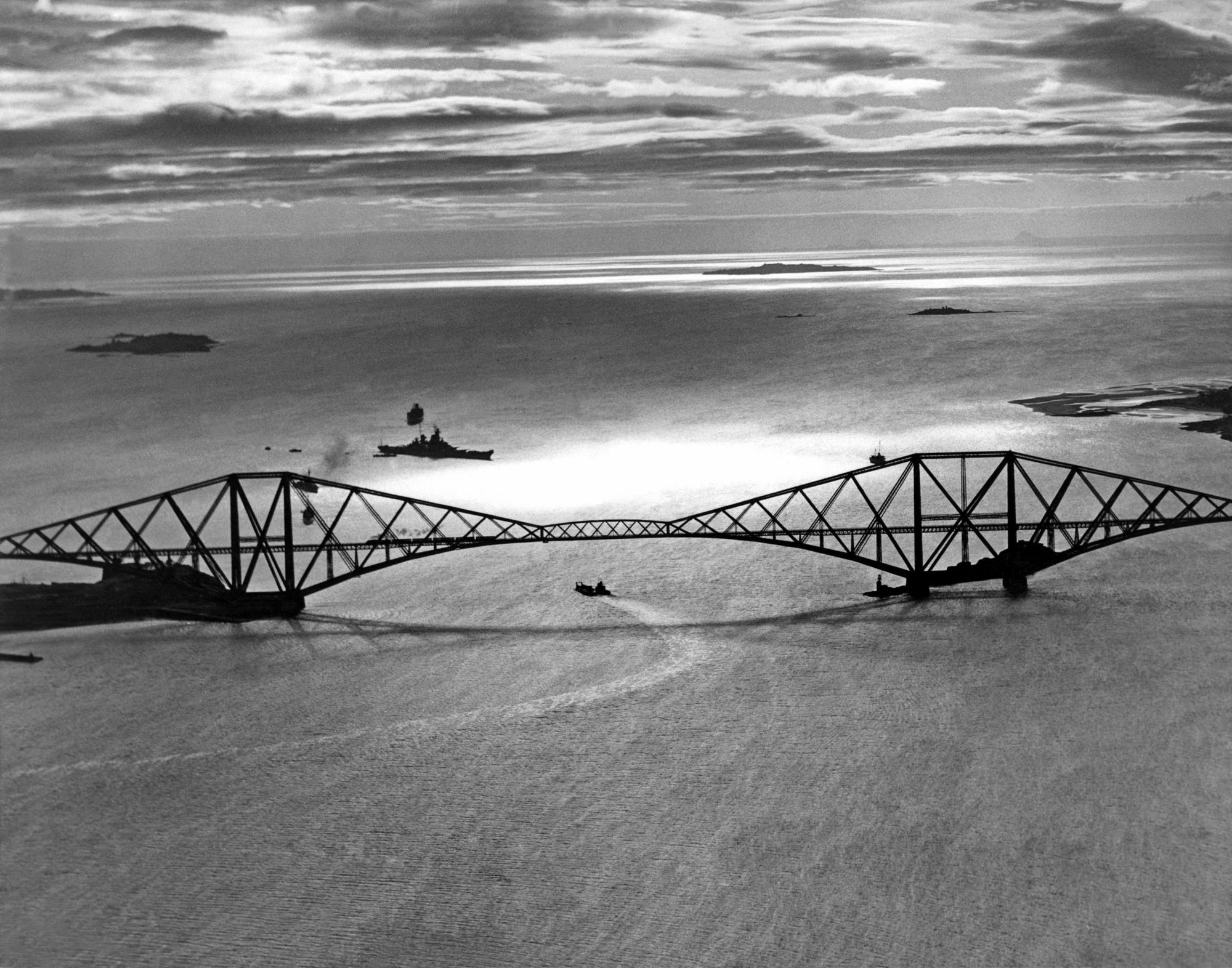
Look south from the 8th hole at Aberdour Golf Club, where the terrain folds toward the Forth, and you can imagine the dark silhouettes approaching from the east.
The club sits across the estuary from Rosyth, a key naval base then, and the setting for our Drop Zone campaign—a shoot that placed our headcovers and pouches, made from vintage RAF flight gear, back into the landscapes that shaped their design. These were not garments born of battle, but of readiness. Utility, toughness, and modularity—traits still relevant today.
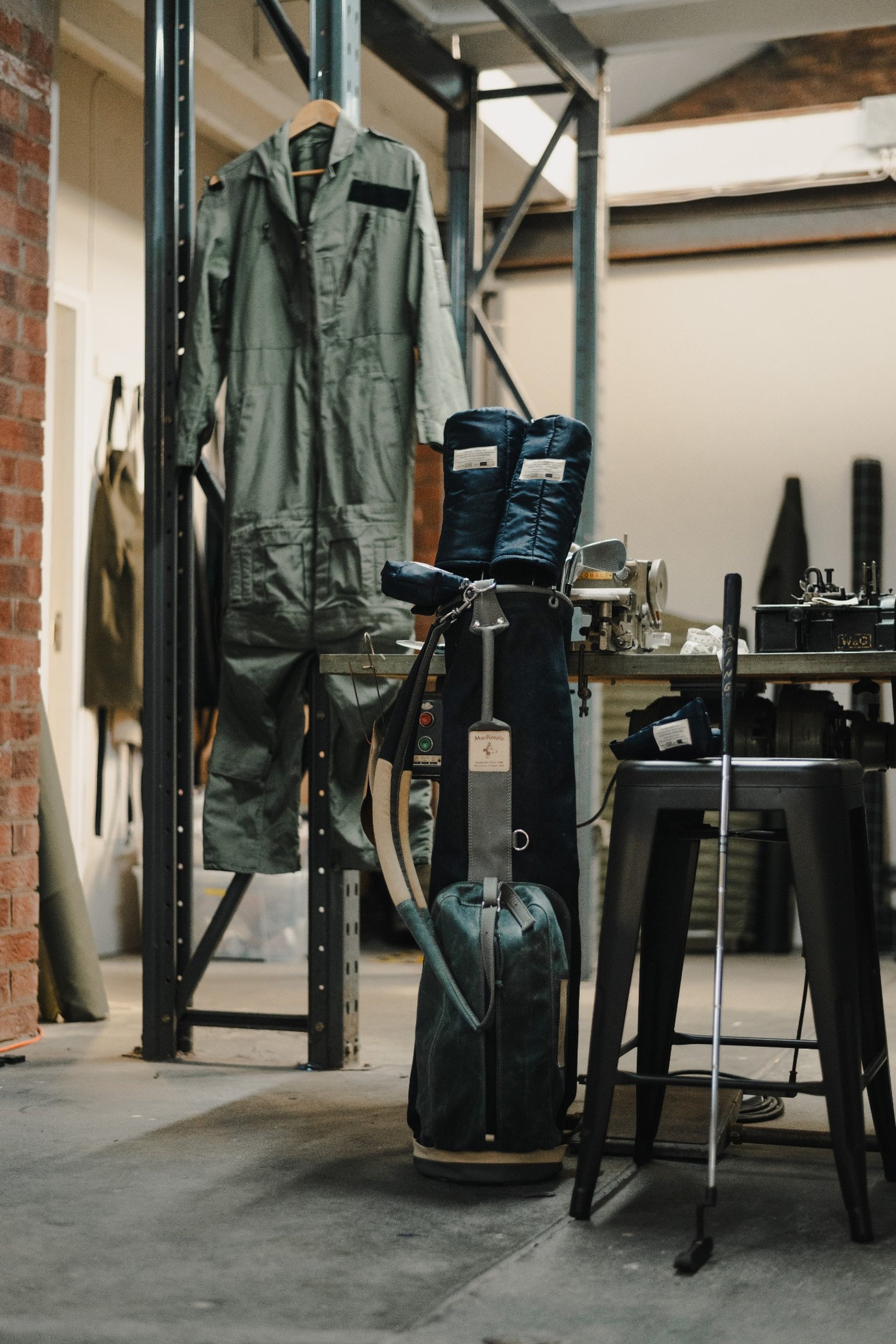
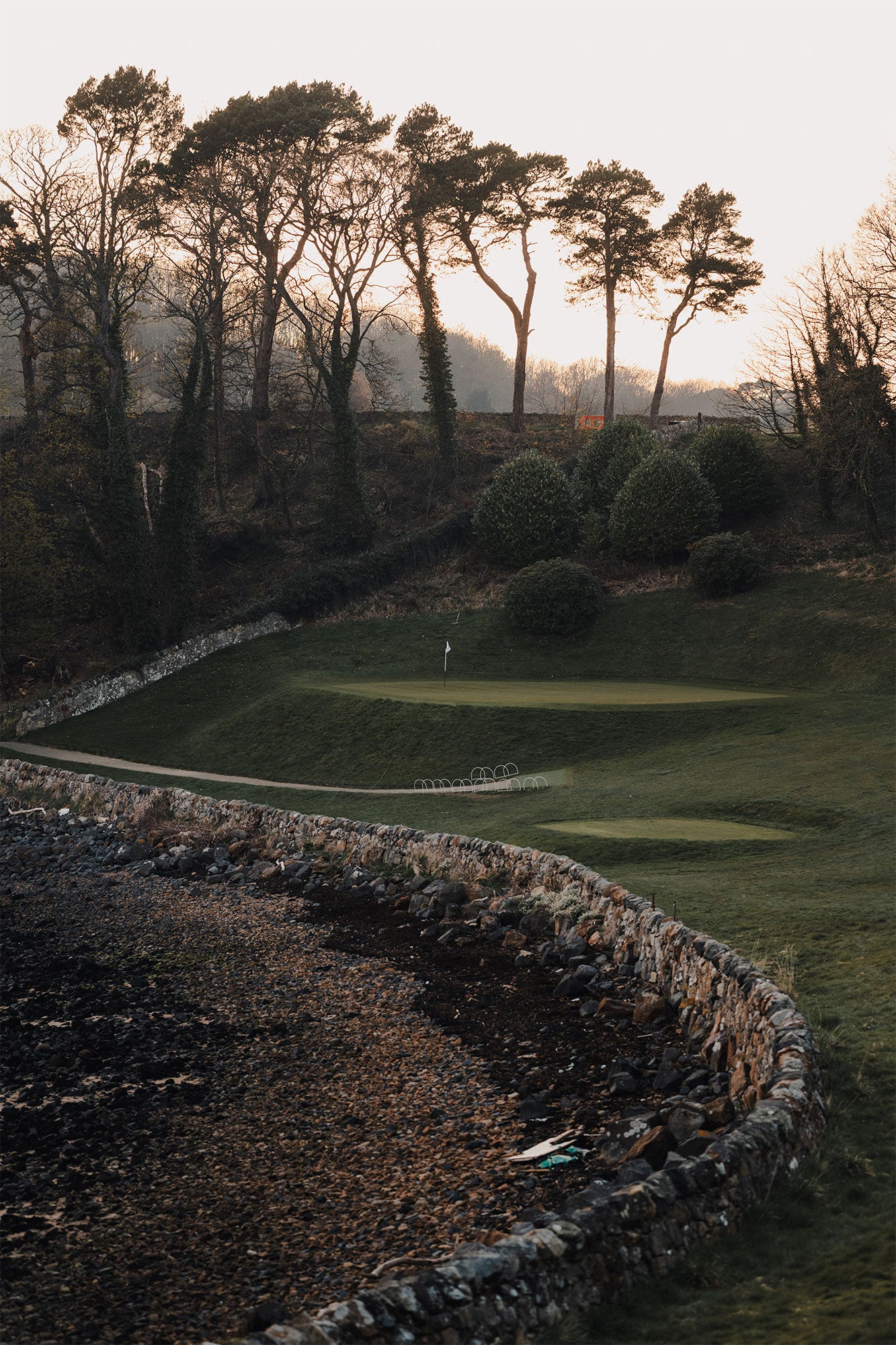
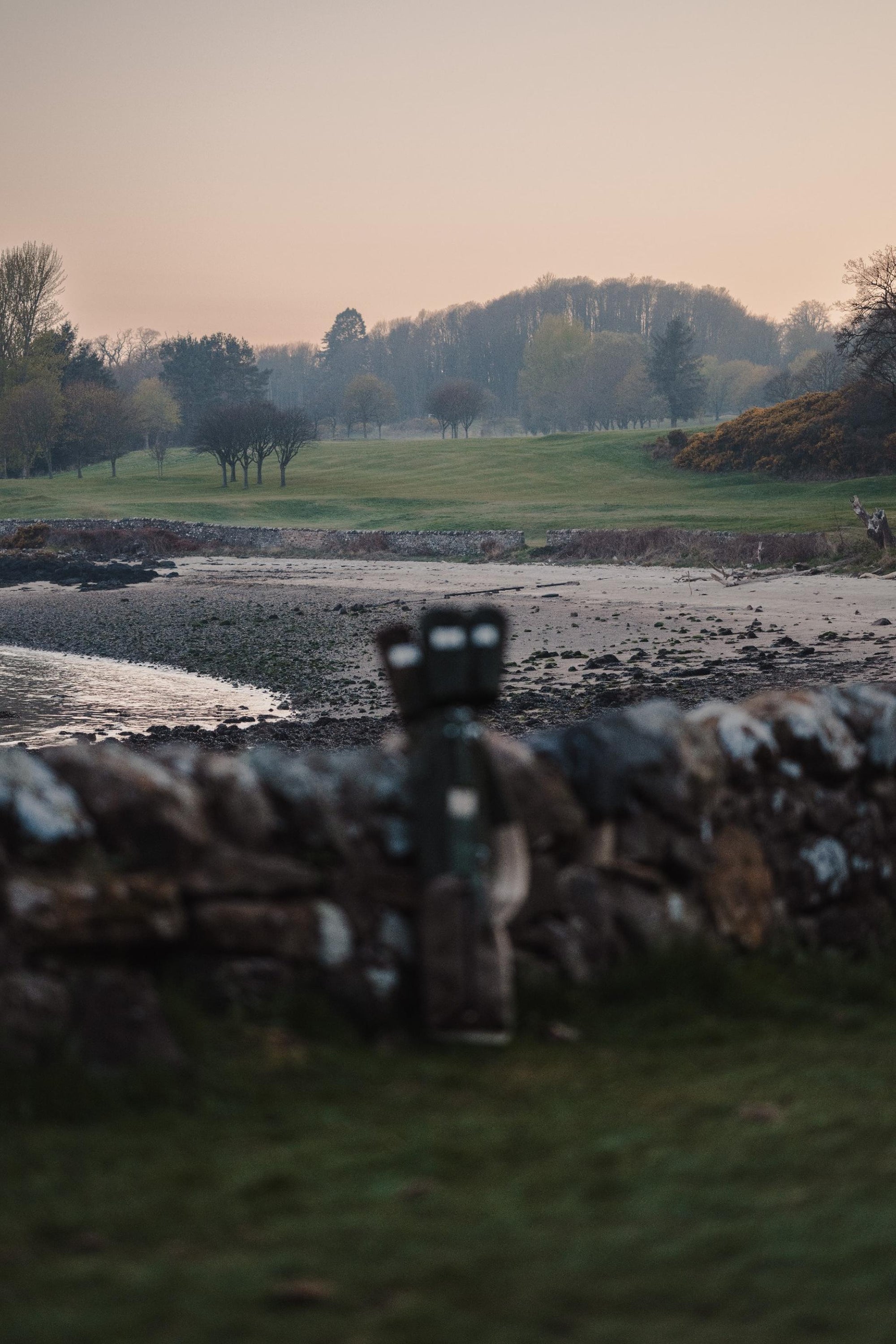
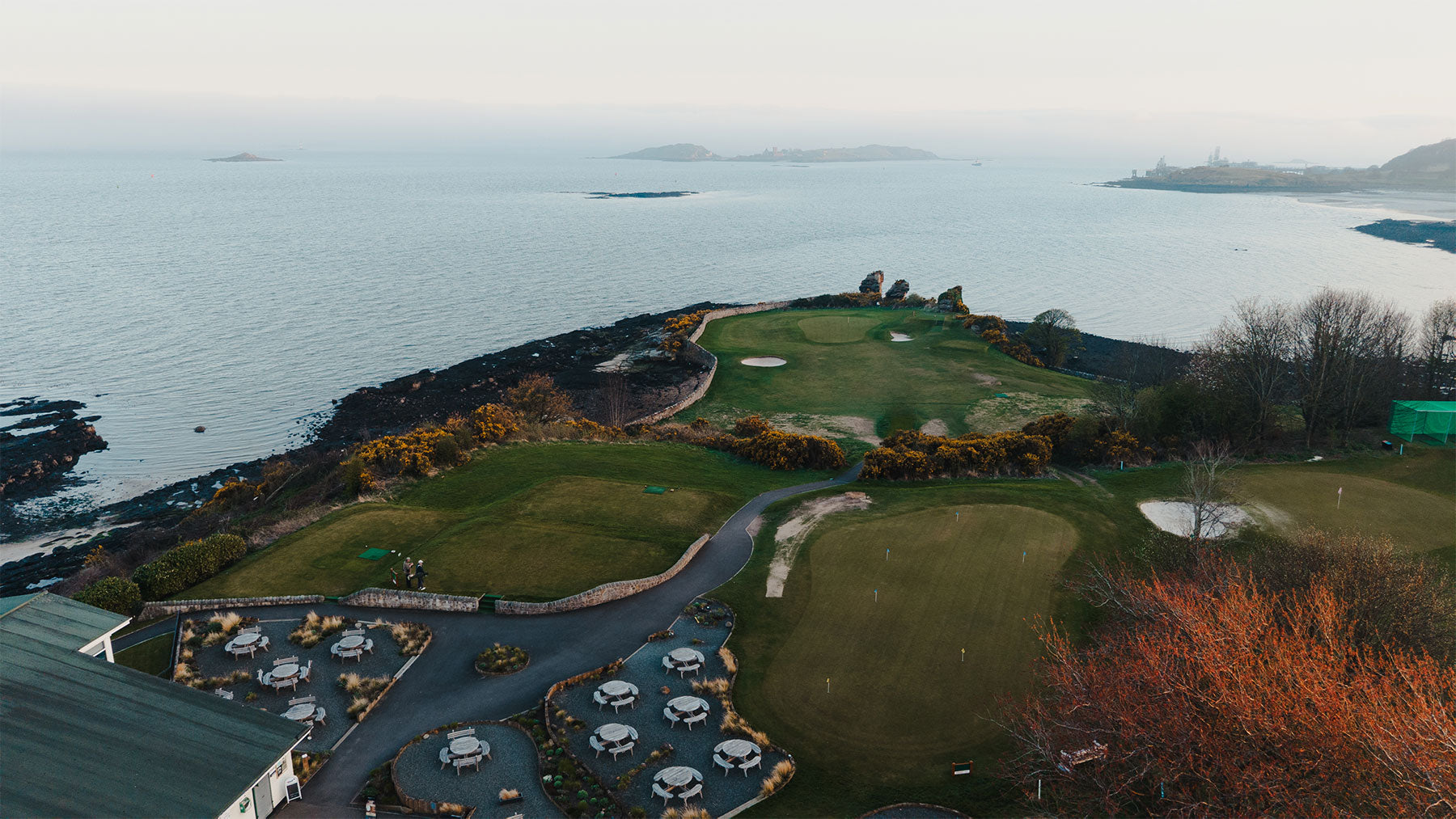
Even now, the story lingers. At Leuchars—once a major RAF fast jet base and now under Army command—military presence continues. Its long runway, tucked just inland from the Fife coast, remains visible from the Old Course at St Andrews, where golfers tee off against the skyline, unaware perhaps of the layered history in view.
And further north, in Lossiemouth,Typhoons still roar overhead, their sound briefly overtaking the crack of a crisply struck iron at Moray Golf Club, or at Royal Dornoch, where the course’s northern solitude meets a wide Highland sky.
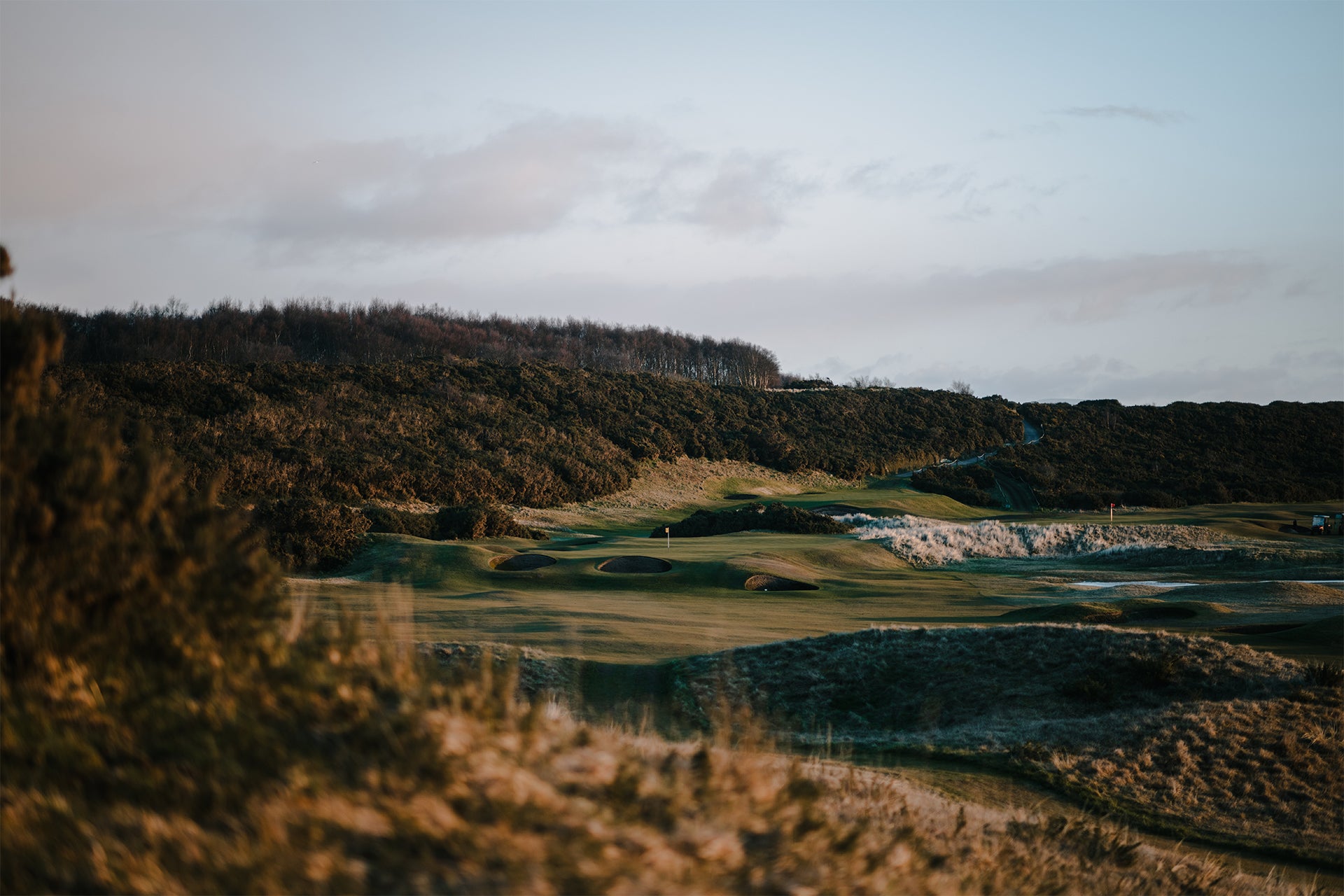
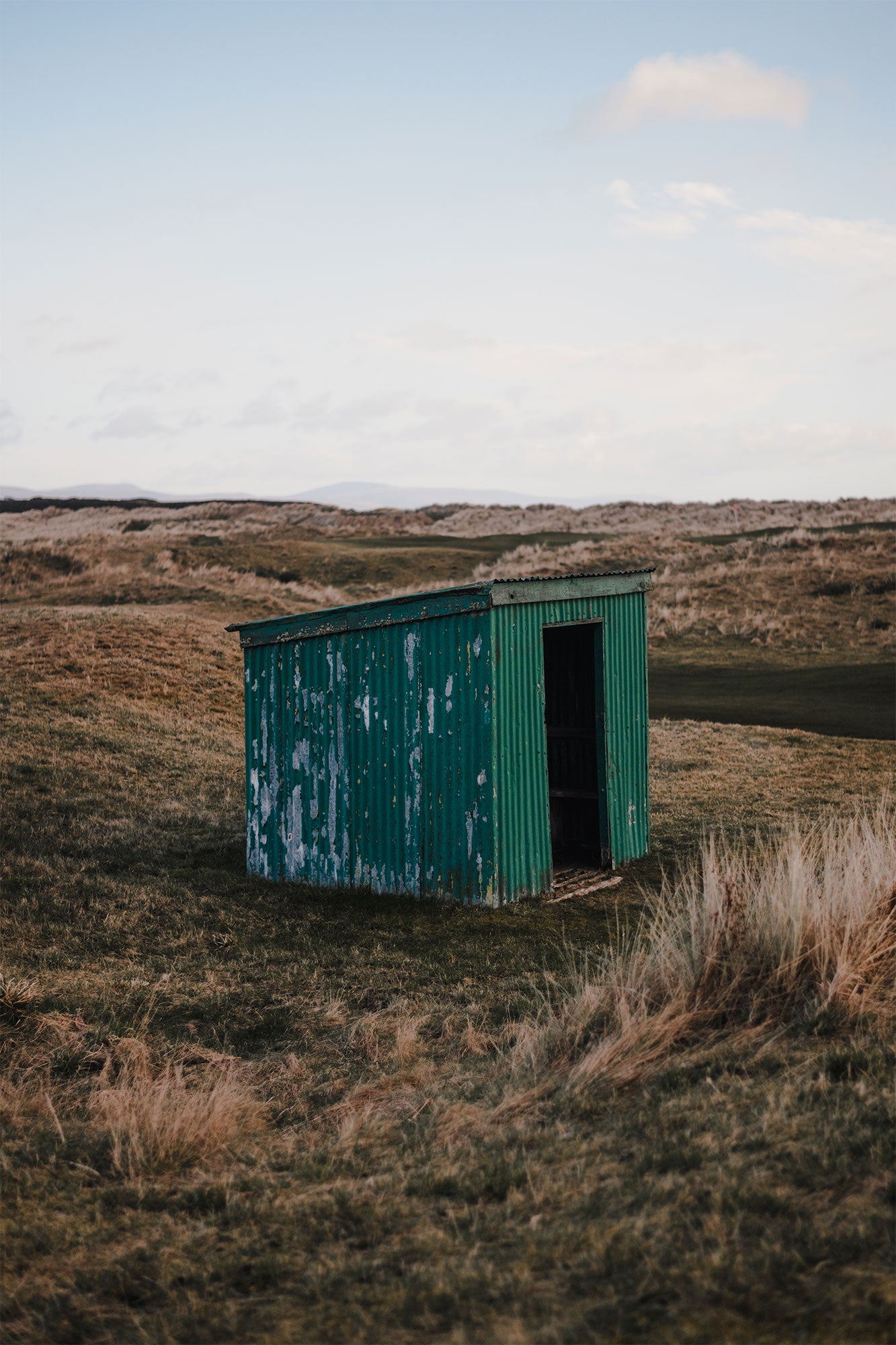
Royal Dornoch
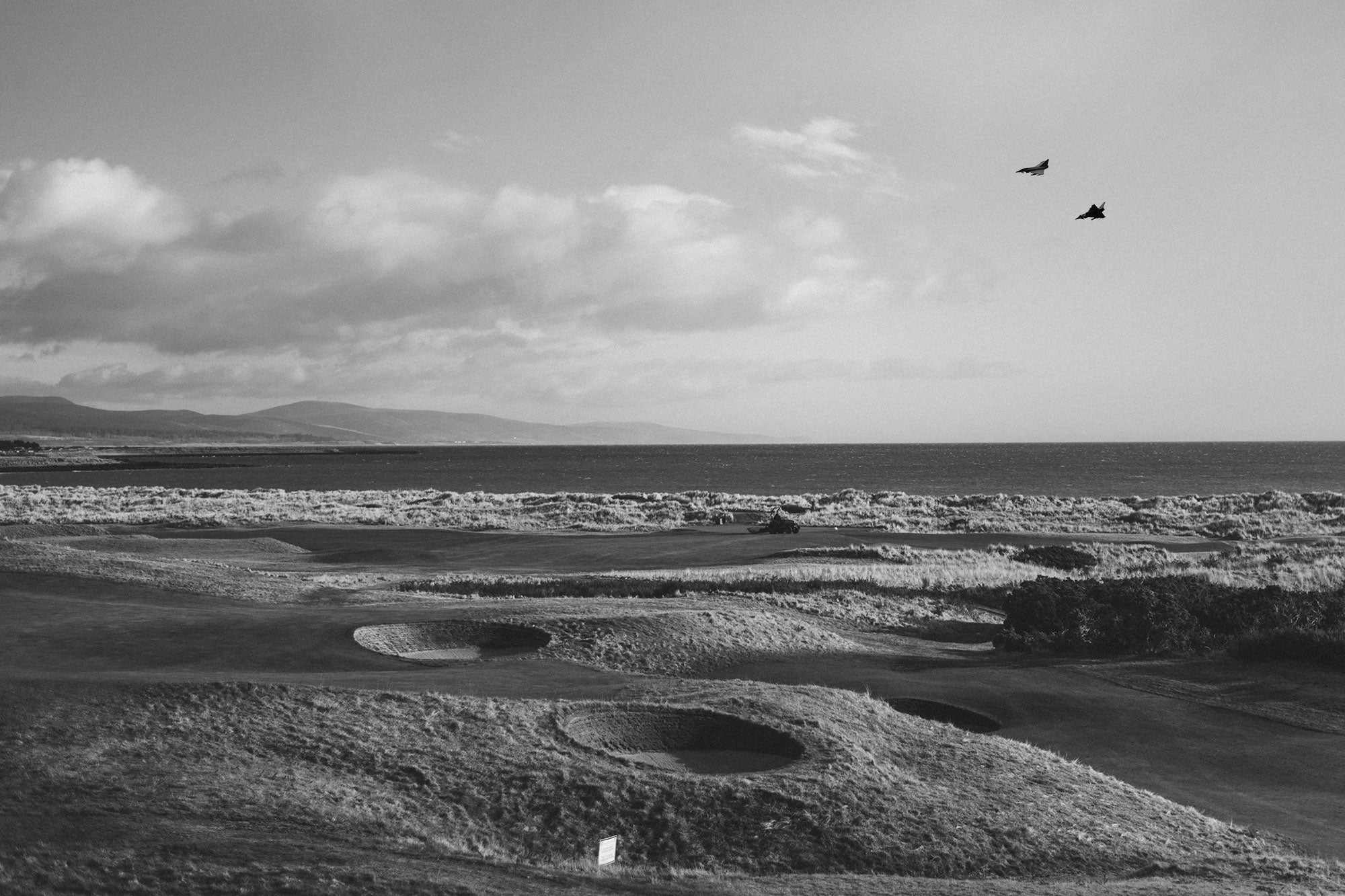
Both the aviator and the golfer read the wind. Both train for precision, for rhythm, for quiet in the mind.
There’s something fitting in the pairing. Both the aviator and the golfer read the wind. Both train for precision, for rhythm, for quiet in the mind. Both feel the land—the lean of the turf, the camber of the ground, the shift in weather. And for those stationed at these bases, golf became more than recreation. It was a tether. A grip, a stance, a swing. A game that doesn’t change, even as the world around it does.
At Fyfe Golf, this history isn’t background. It’s part of our story. Our Drop Zone collection nods to that lineage—crafted from vintage RAF flight suits and quilted liners, reimagined for the game. Materials with past lives. Functional, familiar, and made to last. Each headcover carries a fragment of shared heritage between military life and the linksland. Not nostalgia, but continuity.

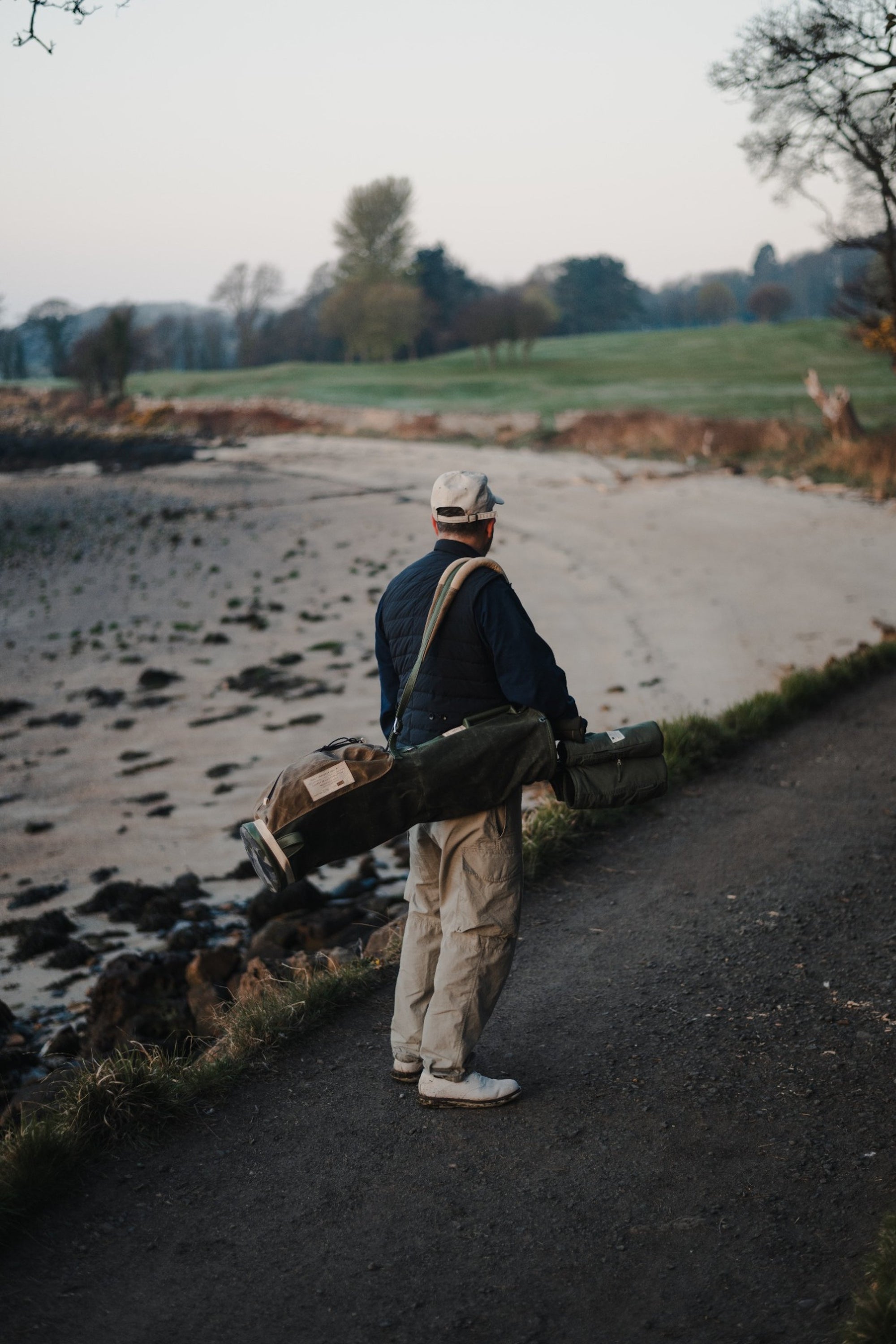
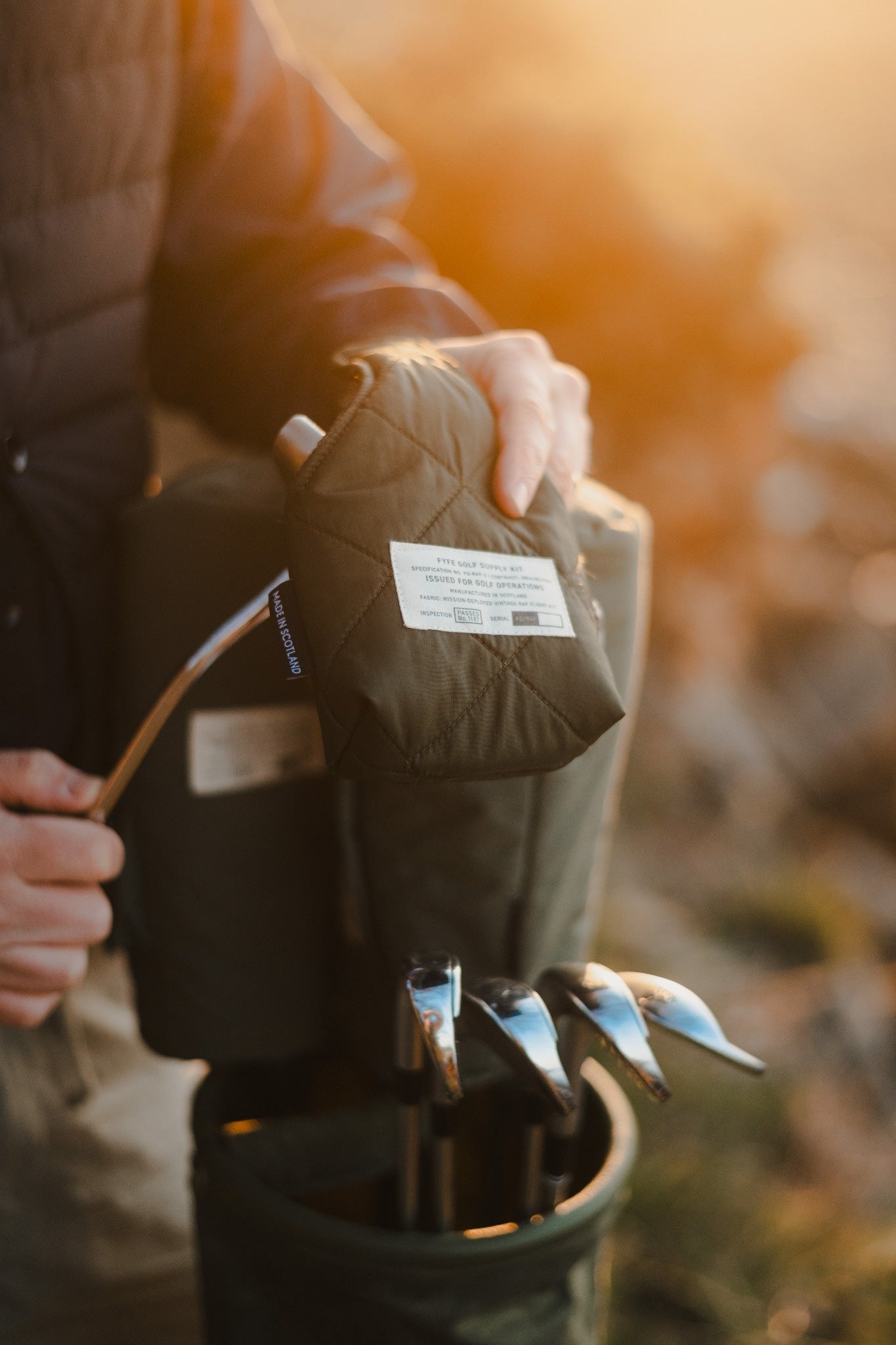
Stories worth holding on to.
These are not loud tales. They don't shout for attention. But if you walk a coastal course in the right light, you might see it—the outline of a runway across the dunes, or a hangar down the road that now stores tractors instead of aircraft. You might sense the weight of memory held in the land.
Golf in Scotland has always been shaped by its setting. Wind, sea, and sky. And for a time, by war. The echoes remain—not as scars, but as stories. Stories worth holding on to.
And through these pieces, you can carry a part of that story forward.
Small Restock Launches 4th Sept 2025
